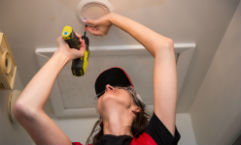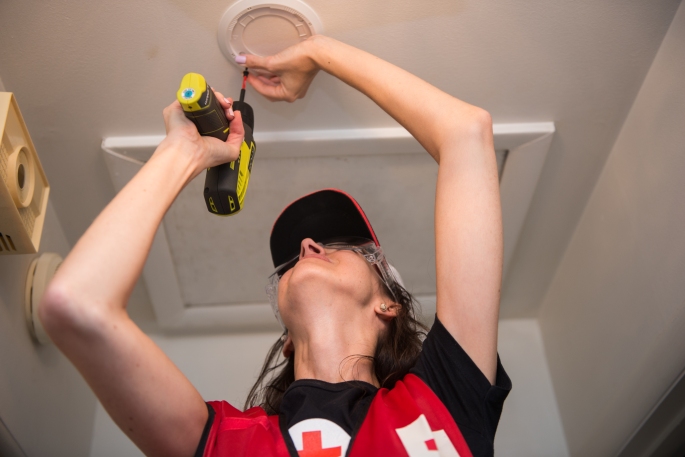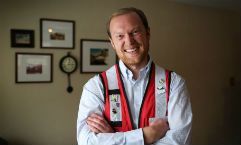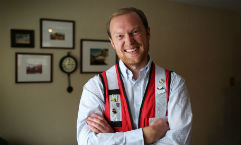By TARA CADY
Senior Editor for Niche Publications of the Billings Gazette
You and your family are the first responders to any home emergency.
In the moments before the fire department and paramedics come, it’s up to homeowners to know their next move so they can react with caution and get out of harm’s way.
Practicing home emergency drills, having a crisis to-go bag and lowering risks are all ways to be ready when disaster strikes.
Prepare for the worst so you can expect the best outcome with these safety tips.
Prioritize people, not property
Michelle Kay, a six-year American Red Cross of Montana volunteer in Billings, responds to mostly wildfires and flooding disasters. Ninety-percent of what she responds to within city limits are home fires.
Through her work with the American Red Cross’s home fire safety campaign, Kay has collaborated with the Billings Fire Department, ensuring homeowners have working smoke and carbon monoxide alarms in every living space and bedroom. She recommends having detectors by the furnace and water heater, as that is where carbon monoxide leaks are most likely.
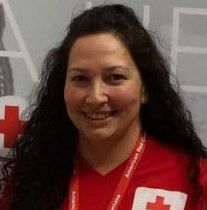
Portable heaters, dry Christmas trees with lights on them, turkey fryers and unattended candles are some reasons the local Red Cross office receives several calls weekly for home fires during the holiday season.
And it’s the homeowners reflecting on the home emergency that gives Kay cause for concern. They tell her, “‘I tried to grab one more thing, you know?’” Kay said.
“Everybody kind of tries to stay a little bit longer than they should,” she said. “You can’t replace a life. Nothing is worth losing your life over your home.”
Kay says you want to be able to get out of the house in two minutes, and have two ways to escape from any room.
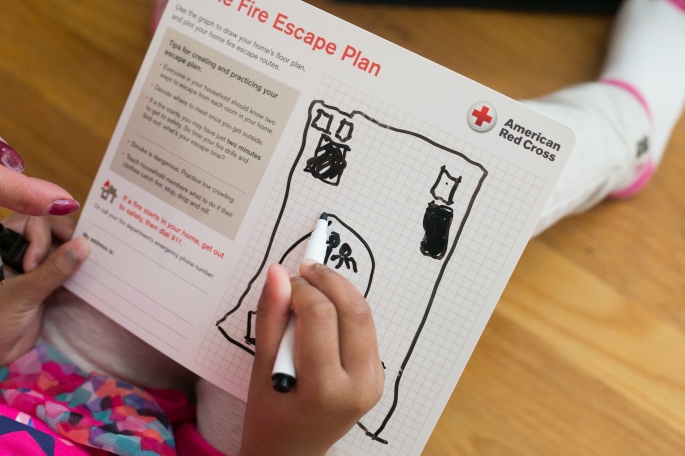
Worksheets are available online to draw out a fire escape plan.
“Let your kids know what it looks like so they’re not scared,” she said. “Have a meeting place, whether it’s across the street or down the street.”
Driven to be safe
Because escaping is more important than grabbing belongings during a house fire, Kay says to store emergency supplies in your car, where they’re more likely to be used.
“(Homeowners) should already have a winter preparedness kit in the car,” she said.
But for homes in areas prone to wildfires, kits can also be kept near the front door with important documents like house deeds. Homeowners may have more time to react in those instances.
According to the Yellowstone County 2011 Emergency Operations Plan, flooding is ranked priority number one for natural hazards in a risk-based assessment; wildfires and urban fires are ranked second and eighth, respectively. Winter storms have the highest probability for disaster. The assessment, conducted in 2004 and updated in 2010, bases priority on the estimated probability and impact of the hazard.
In deep water
Phil Witschi, co-owner of Big Sky Disaster Restoration in Billings, says water damage is a more prevalent home emergency than fire or smoke. The business receives several water-related calls to every fire- or smoke-related one.
As flooded basements, leaky roofs and broken pipes are discovered, Witschi says that’s when homeowners should be notifying someone.
“If you wait, all it takes is about 70-degrees temperature, a little bit of moisture, some source of food, and mold is growing,” he said.
Many homeowners don’t notice the emergency until water is coming in through a wall.
The degree of damage depends on where the water originated. Water coming from within the home is safer than water coming from outside. Ground water ruins carpeting since it carries animal feces and other bacteria.
Aside from the usual culprits of water damage – broken sprinkler lines, pipes and hose bits – Witschi says many homeowners don’t notice ice dams forming in eaves. Ice dams form when snow melts and refreezes.
Built for shedding water that gradually drops, roofs are not sealed water-tight and moisture can move beneath shingles and leak into the house, he said.
“We have trouble praying for the Lord to bless our business because that means catastrophe for other people,” said Witschi. “You have to be cognizant of the hazards.”
Winter weather advisory
An October 28, 2016 article authored by Jannel Okeson on Montana’s official state website, www.mt.gov, says there have been 27 fatalities in Montana from extreme winter weather since 2000, mostly due to automobile accidents, avalanches and cold weather exposure. The article outlines what homeowners should store in their vehicles, as well as carry in their homes if storm conditions persist for more than one day.
Although following weather reports is a traveler’s first line of defense, the government suggests drivers carry the following: a mobile phone and charger; blankets and sleeping bags; a flashlight with extra batteries; a first-aid kit; extra clothing; a shovel, windshield scraper and brush; a tool kit; a tow rope; battery booster cables; a water container; a compass and road maps; high-calorie, non-perishable food; a small can and waterproof matches to melt snow for drinking water; and a knife.
Because loss of heat, power and communications are likely in severe winter weather, precautionary items to keep in the home include: a flashlight and extra batteries; a battery-powered NOAA weather radio; extra food, water, medicine and baby items; first-aid supplies; an emergency heat source; heating fuel; a fire extinguisher; smoke alarms (tested monthly) and food, water and shelter for pets and livestock.
Residents of communities impacted by severe winter storms can use the American Red Cross website to notify friends and family of their wellbeing or call 1 (866) GET-INFO.
This story first appeared in the Billings Gazette.
